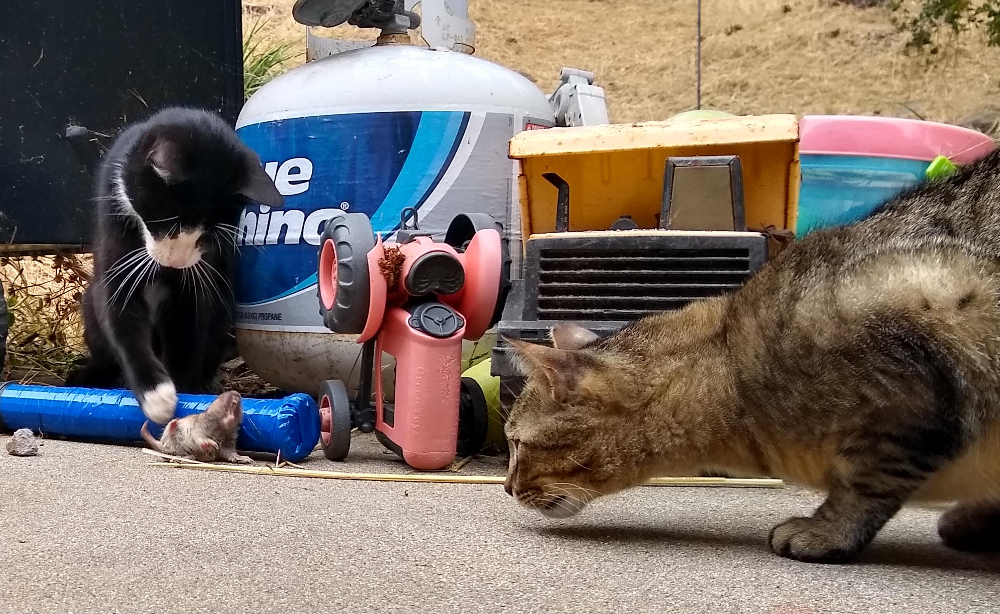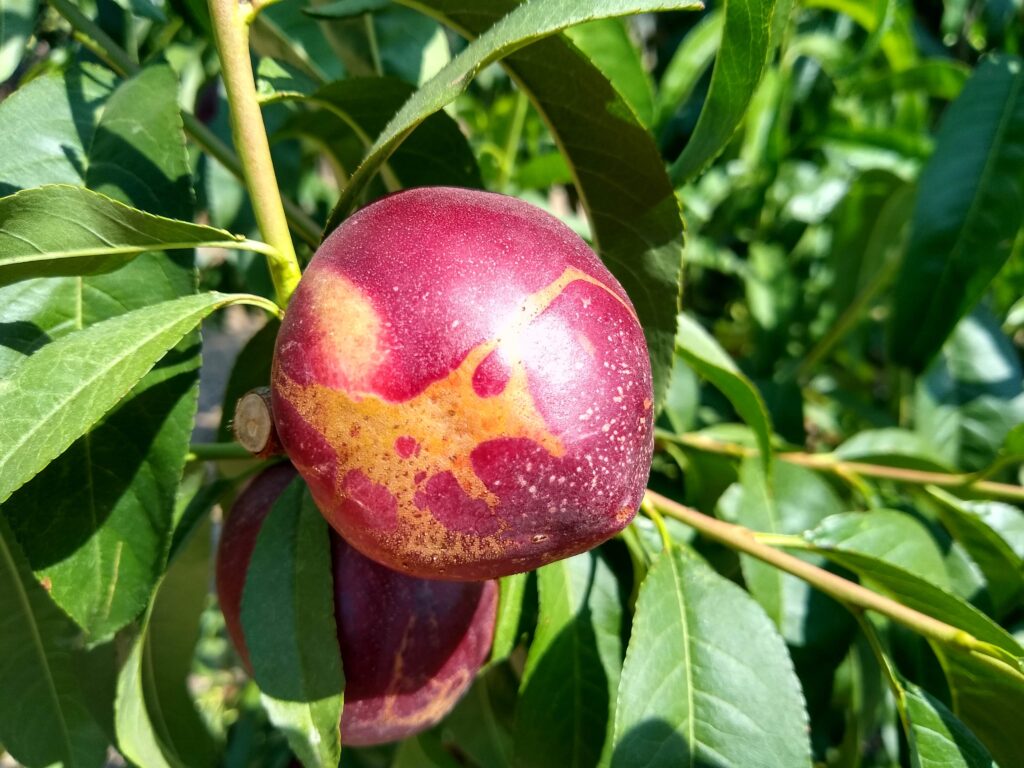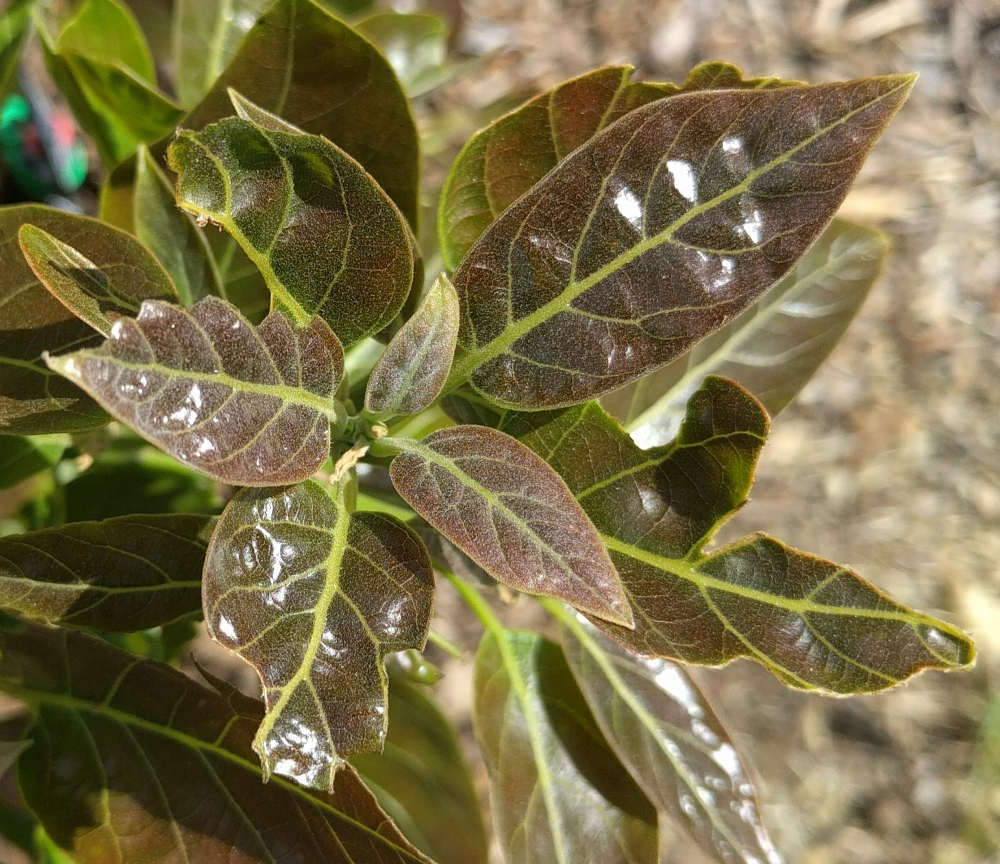I am not afraid of so-called fruit tree pests and diseases. They’re just critters who also like to feed on our fruit trees. I say “also” because they’re just like us, they’re looking for a tasty snack too. They don’t munch on our fruit trees out of personal vendetta.
More than that, some pests do so little harm that I don’t really consider them pests. They don’t require our interference, and others that do require it have been irritating gardeners for centuries and gardeners have developed methods to manage them.
Plus, our individual yards don’t have all pests and diseases. Each of us is only affected by a limited palette of them. I don’t deal with deer or raccoons, for example. Maybe you don’t deal with ground squirrels or mockingbirds.
And finally, pests and diseases are natural. They’re wildlife. I try to view them as opportunities for learning about nature. Today, I am seeing fire blight on my Pink Lady apple tree. I’ve never seen this before.

Neat. Why is it appearing now? Where did it come from? How much of the tree will be affected? Why are the Fuji, Gala, and Yellow Newtown apple trees adjacent to the Pink Lady not affected? This will be fun to observe.
Not that I don’t get annoyed at pests from time to time. Just last week I had been waiting to pick an avocado from a young tree. The tree had one fruit, and it was a variety I’d never tasted before. I was looking forward to discovering how the variety tasted. Then one morning I found it on the ground half eaten by a critter the previous night.

Below are links to posts and brief notes about some of the pests and diseases that I have experience dealing with. Maybe they will help you be less afraid or annoyed.
Rabbits
Rabbits chew on the trunks of young fruit trees.
Squirrels
Squirrels can steal all of the fruit from a plum tree, chew on avocados, and much more.
Gophers
Gophers love the roots of figs and bananas but will chew on the roots of any fruit tree enough to kill young ones. I prefer to trap them with Cinch Traps, and I know others who successfully plant in wire baskets or use other traps such as the Gophinator.

Currently, our family is blessed with two adept hunter-cats. They help me keep the gopher population down. They have also eradicated mice and rat problems.
Rats
Rats usually chew on fruit without taking it from the tree. Snap traps and sticky traps are effective, but a cat that has good hunting instincts is far superior.
Birds
Birds eat blueberries whole but peck into apricots, pluots, cherries and more.
Borers
Borers are insects that make holes in branches and trunks. They are attracted to sunburned areas. I’ve found that if I prune properly such that no branches on my stone fruits and apples and pears get sunburned, then there are no problems with borers.
Thrips
Thrips cause scarring on nectarines, but usually the scarring is so minor that it doesn’t affect the fruit’s eating quality so I do nothing to try to manage them.

Leafminers
Leafminers on citrus trees cause zigzag tracks in leaves during summer and fall, but since it’s only a cosmetic problem on the leaves during part of the year, I don’t do anything about it.
Peach leaf curl
Peach leaf curl is caused by a fungus and looks like red, swollen and distorted leaves. I find no reason to attempt to do anything about it either.
Beetles, bugs, and worms
Beetles eat holes in the leaves of fruit trees and worms eat holes in fruit. Chickens roaming under fruit trees are the magic bullet for both of these pests.
Snails like to feed on citrus leaves. June beetles and earwigs love to chew on new avocado leaves.

Last week, I presented a version of this post at a meeting of the California Rare Fruit Growers, North County San Diego chapter, where I learned more about some of these pests and diseases from other members and attendees. Thanks to all who participated that evening.
All of my Yard Posts are listed here.
Your support keeps the Yard Posts ad-free. Thank you.




I used to have a ton of snails in the yard, I think the Opossums took care of all of them, but for the first time, they are eating oranges off the tree in addition to the fallen ones. I noticed 3 or 4 orange peel remains each day, so I installed a camera, and found it is the opossums eating them. I found there are 3 full size/adult opossums visiting the yard, and even though I have a large orange tree with 300 or more fruit, at this rate, it is very noticable. They also like avocados, I would say they are what chewed in to your pictured avocado. They seem to try to eat them, even when non-ripe. They also like pineapple guavas, apples, and pecans.
I once shot a young opossum eating apricots. I feel bad about it now.
I remember my first reed growing and waiting until July to pick it. I looked at it at the end of June and was excited at picking it. Low and behold that first weekend in July I went to pick it and was no where to be found 🙁
I am suddenly seeing a lot of yellow leaves on my Reed avocado tree. A lot! Is this normal or what do you think is going on? I’ve had it for three years and it was 3-5 years old when I planted it.
I am suddenly seeing a lot of yellow leaves on my Reed avocado tree this year. A lot! Is this normal or what do you think is going on? I’ve had it for three years and it was 3-5 years old when I planted it.